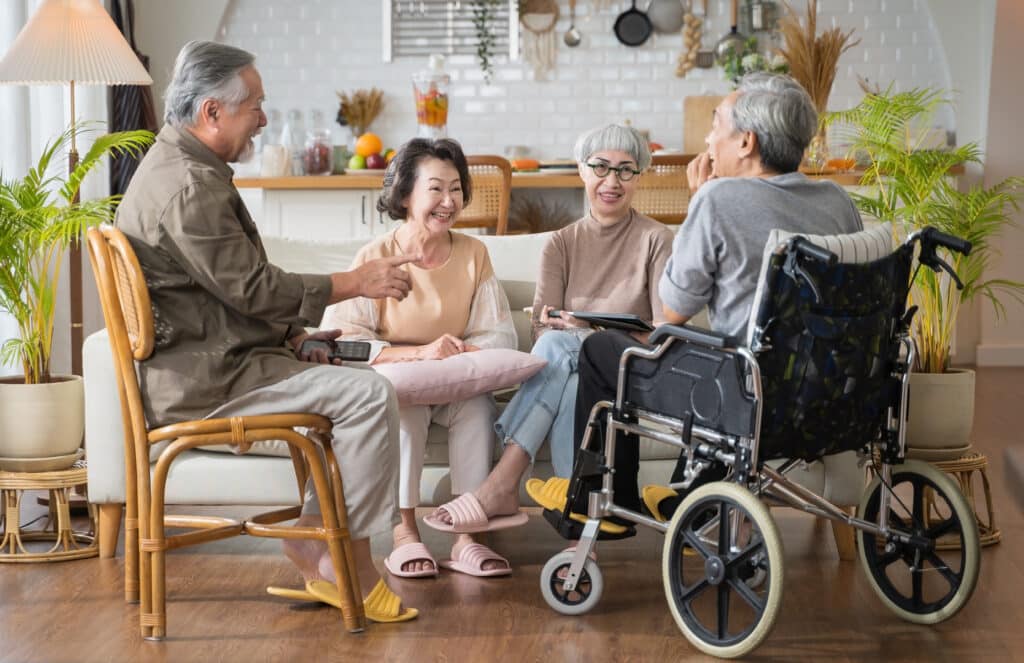Today’s senior facilities are a far cry from the nursing homes of yesteryear. They focus on creating a community-based environment that fosters independence within home-inspired accommodations, all with the safety and well-being of their residents at the forefront. How then do MEP firms meet those demands from a mechanical stand point? Our Mechanical Design Controller, Nicholas Pappas, PE, answers that question and more below:
Q: How can mechanical design promote community interaction?
A: When we design, we take two things into account. We first think about how most of us live our lives outside a facility, and then, second, apply mechanical design principles to make the facility most closely match that. For instance, there’s nothing worse than going to a hibachi style restaurant for dinner only to return home and realize your clothes smell like your dinner. The same goes for senior living residents. In order to prevent this, kitchens, especially demonstration or communal kitchens, need to be designed to capture as much heat, smoke and grease-laden vapors within the kitchen hood. This begins by first properly sizing the hood’s canopy and exhaust fan to quickly capture and remove the cooking vapors. The kitchen’s HVAC system then needs to not only account for any heat produced by the cooking process but simultaneously not produce a significant cross flow at or near the hood which could prevent the capture of cooking vapors.
Q: What mechanical design considerations should a senior facility take into account in order for residents to better enjoy its outdoor amenities?
A: When a facility is in design, we take special care to avoid outdoor amenity areas when determining the locations of outdoor mechanical equipment and mechanical exhaust vents. In doing so, residents and staff are able to enjoy a facility’s outdoor amenities in peace without the noise generated by outdoor equipment or the strong smells exhausted outdoors.
Q: How can senior living facilities help promote resident self-care from a mechanical design standpoint?
A: Many senior living facilities now offer on-site hair salons or fully-equipped gyms. For these areas, indoor air quality is key. Many senior living residents suffer from some type of respiratory issue or illness, therefore providing additional ventilation to these spaces is crucial. For example, in a salon, many of the products used produce very strong odors. Our mechanical design captures the odors as close to the source as possible and exhausts them outdoors.
Q: How does a facility’s mechanical design help protect the well-being of the staff and residents?
A: In today’s pandemic world, the safety of all those that work and live in a senior living facility is even more crucial. From a mechanical standpoint, this means we design to mitigate the airflow between rooms and common areas to help stop the spread of infectious diseases through the use of a multitude of methods including ultra-violet light, bi-polar ionization and filtration. This also entails designing to meet ASRAHE 170 as well as local jurisdiction requirements in order to provide the optimal balance of ventilation and negatively pressurized air. For more information on this specific topic, checkout our October 2020 blog titled COVID-19 and Its Impact on Mechanical Design.
Q: What other mechanical design considerations should be taken into account to ensure the best possible living and working situations for residents and staff?
A: For residents (and when the owner’s budget allows), we like to avoid using a PTAC or hotel type HVAC system for the resident’s rooms. Providing a better quality HVAC system, especially one with a wall mounted thermostat, allows the resident to control their HVAC system, just like they would at home. In addition, a quality HVAC system can better control the temperature and humidity within the room as well as provide better filtration of the air. For the staff, we design similarly. Whenever possible, we try to zone the HVAC systems so each area is served by a dedicated system. In certain cases, this also means that we serve staff areas separate from resident areas, allowing them the flexibility of adjusting the HVAC systems to best meet their needs.
______
About VP Engineering
VP Engineering is a top Charlotte-based MEP design firm offering engineering expertise in senior living, multi-family, hospitality, and retail/commercial markets worldwide. With experience in a wide range of building types, our MEP engineering services help keep projects on budget and achieve your goals. Learn more at vpce.com.



